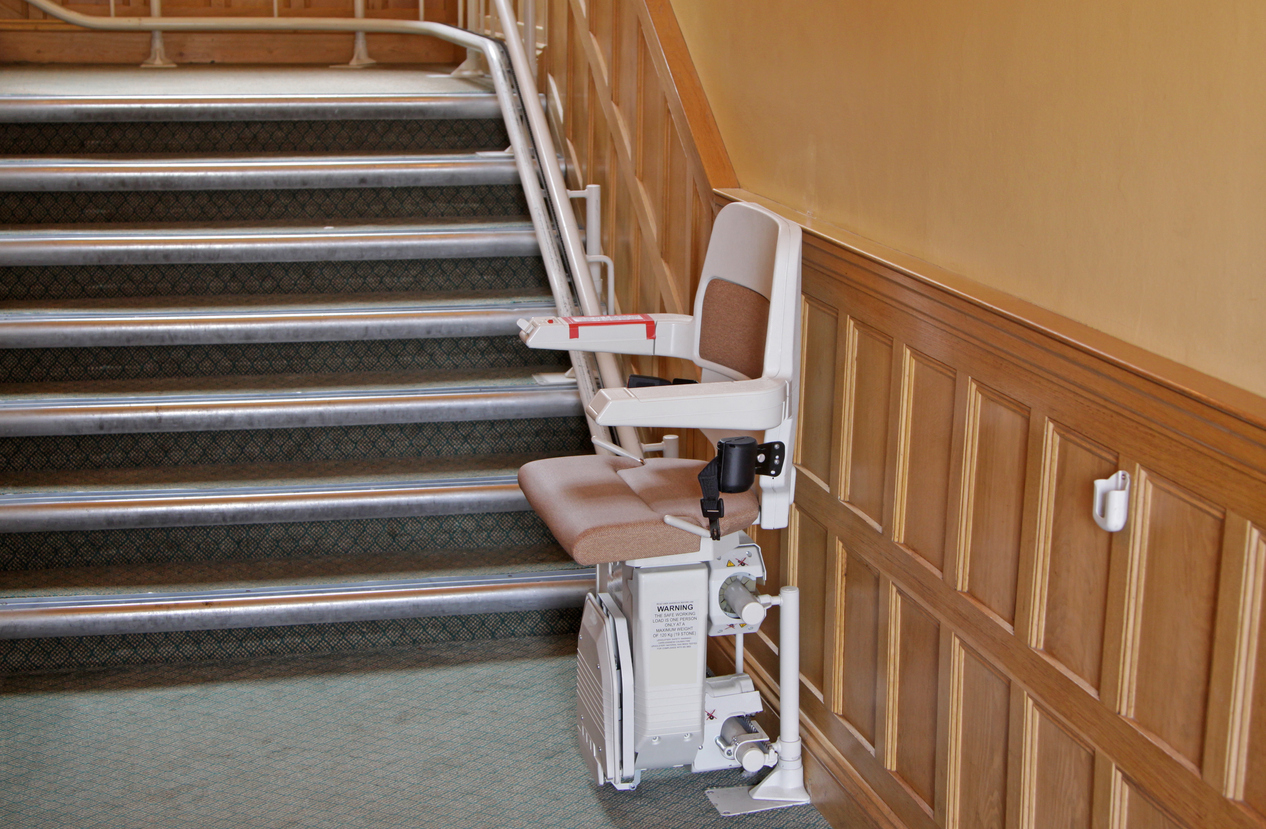On one hand, a stair lift is a simple device: a chair, a railing, a power source, designed to get users up and down the steps. They could be curved stair lift or straight, but they still have the same basic job.
However, there are a lot of misconceptions about stair lifts. In this blog post, we’ll try to separate the myths about stair lifts from the facts.
Myth: If I put in a stair lift, no one else will be able to use my steps
It’s a common misconception: a stair lift will take up your entire staircase. In reality, most stair lifts leave plenty of room for foot traffic. The arms, seat and footrest on your new lift can be folded up to allow space for people to get around the stair lift.
Myth: I have a curved staircase, which means I can’t install a stair lift
That’s another big myth: the notion that stair lifts can only be installed on stairways that go straight up and down.
And that would be true…if curved stair lifts didn’t exist. These stair lifts are designed to operate on staircases that have curves, turns or multiple landings. Just note that curved stair lifts are a bit more involved, requiring a custom installation.
Myth: A stair lift will damage my walls
When you imagine a stair lift installation, it’s easy to picture a big contraption being bolted to your walls. But in reality, your new stair lift will be mounted onto the treads of our stairs, meaning your walls won’t sustain any damage.
Myth: Running a stair lift all day is going to drive up my electric bill
Many people assume that stair lifts operate only using electricity. It’s somewhat true: you’ll need to plug the lift into an electrical outlet at the top or bottom of your steps.
However, stair lifts themselves are powered by a battery, meaning your lift will remain operational even if the electricity goes out in your neighborhood.
Myth: Using a stair lift seems dangerous
Many people think that stair lift users have to exit or get on the stair lift while standing on a step. Trying to get on or off a stair lift this way would be dangerous.
Fortunately, stair lifts are designed with seats that swivel outward, allowing you to sit down or get up directly onto the top or bottom landing.
Stair lifts come with a range of other safety features, including seat belts, key switches to control who can access the lift, and obstruction sensors, which can detect things like objects or pets in the path of the lift and stop it accordingly.
Myth: Stair lifts are just for senior citizens
While it’s true that most of the people who install stair lifts in their home are senior citizens, these devices aren’t ONLY for senior citizens.
A stair lift can help anyone who is having trouble getting up and down their steps. If you’ve had an injury or are just undergone surgery, you can even rent a stair lift for a few weeks until you’ve recovered.
Myth: Having a stair lift means giving up your independence
Many people see a stair lift as a sign that they’ve lost their independence, because they can no longer navigate their stairs on their own.
However, we’d argue that having a stair lift allows you to retain your independence. Installing a lift means you don’t have to rely on anyone else to get from floor to floor. It can allow you to remain in your home instead of having to move into an assisted living facility.
Are you ready to install a stair lift? Pennsylvania Stairlifts is ready to help. From straight to curved stair lifts, from rentals to permanent installations, our team can help make your home a safer, more manageable place. Contact us today to get all the facts you need about your new lift.


